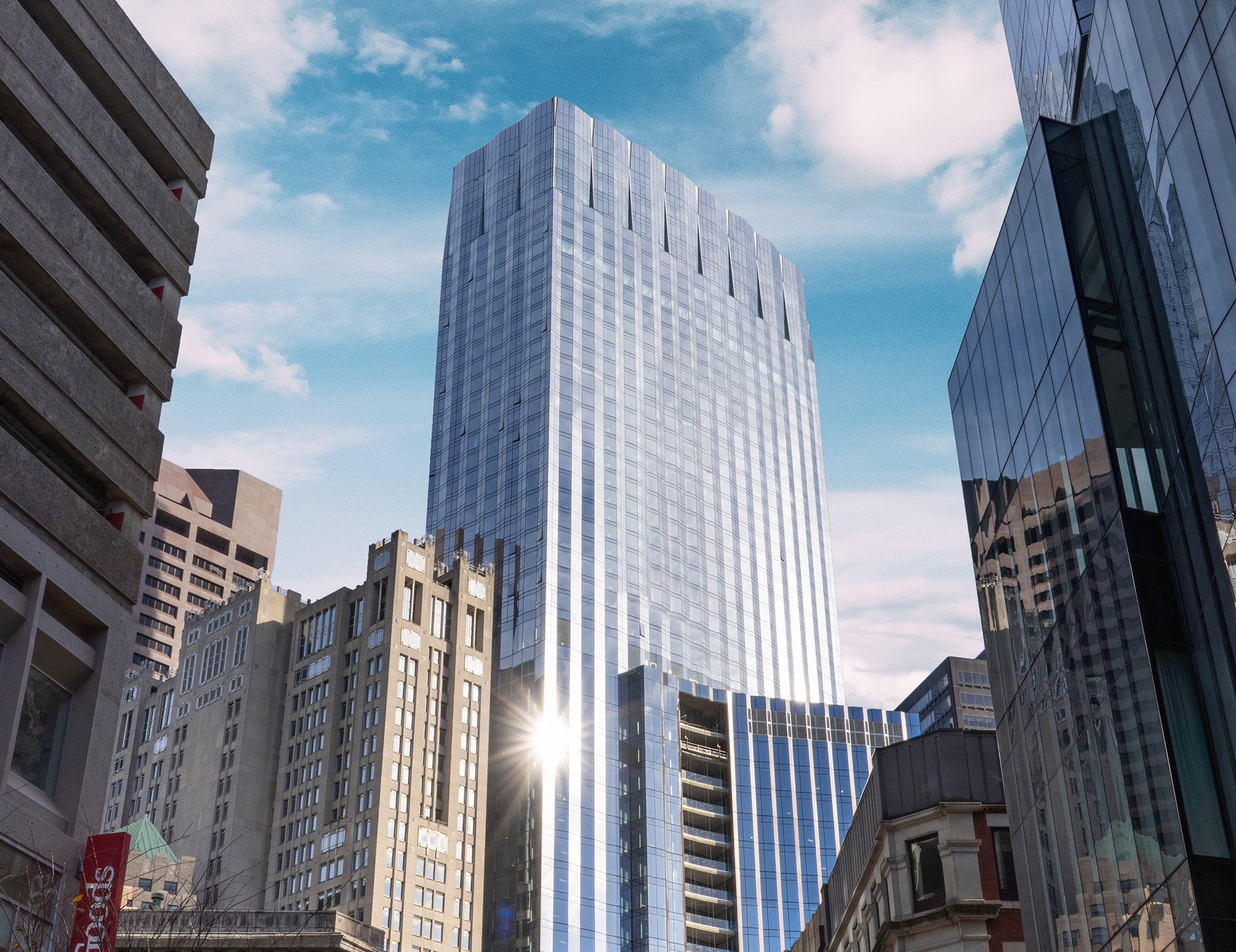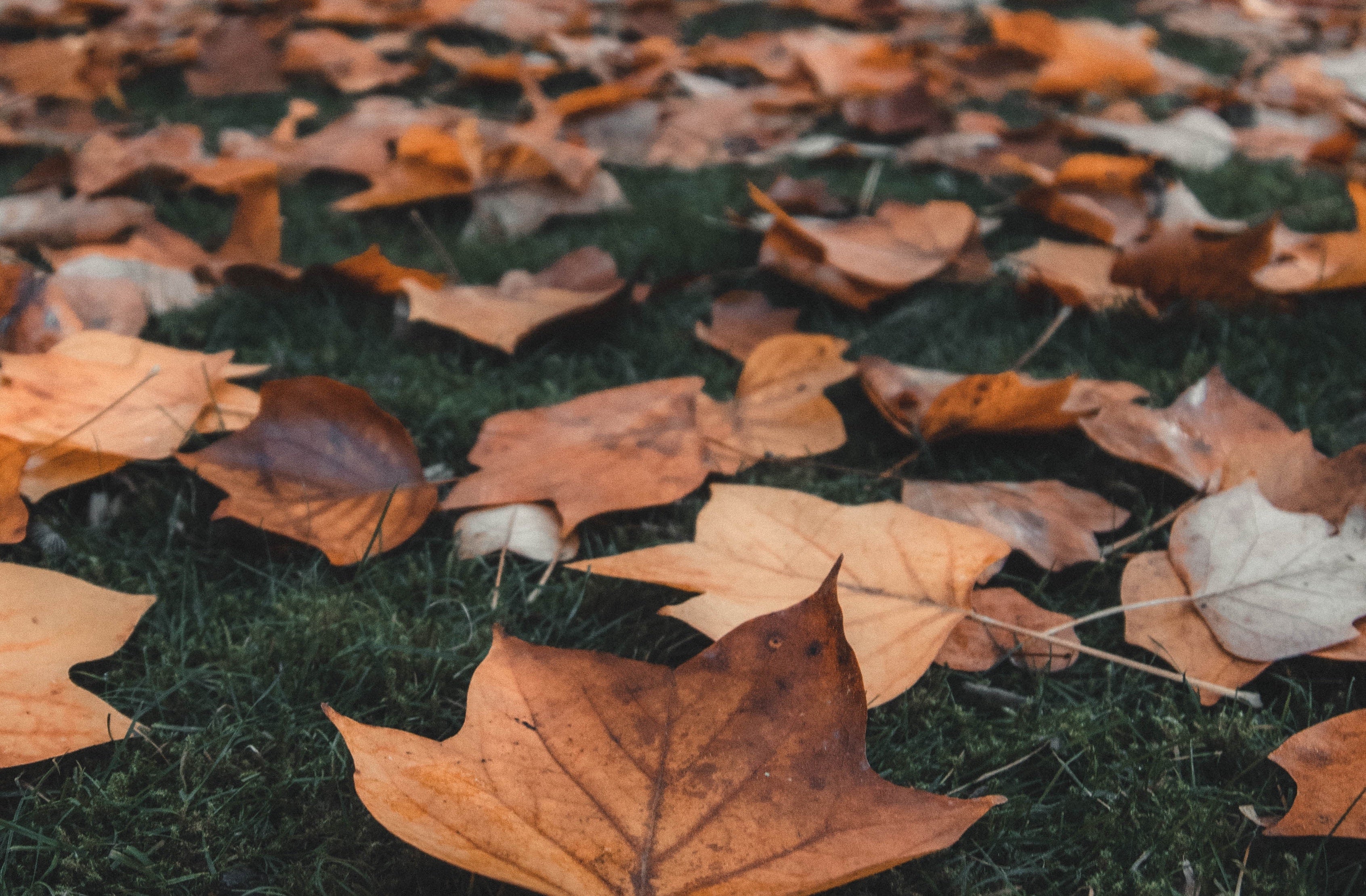Hello fellow world-savers, and welcome back to one5c. (You might notice that this email isn’t coming from Substack, but don’t worry, it’s still us.) We’re smack in the middle of October, which means leaves have started to drop in parts of the U.S. and mountains of swept-up foliage are tempting pile-jumping kiddos and doggos everywhere. Knowing full well that the American obsession with lawn upkeep is frustratingly misguided from a saving-the-planet POV, we’re digging into what reprogramming our grass-tending brains means for leaf removal.
And, because winter is coming, we’re keeping an eye on moves toward better efficiency in the built world—from towering office buildings and affordable housing to unwinding the effects of roads on natural ecosystems.
If you’re enjoying these stories, forward 👉 one5c to a friend. —Corinne
WHAT WE’RE INTO THIS WEEK

A comparable building reportedly uses 1.5x the power of the Winthrop Center. Credit: Courtesy Millennium Partners
Cause for optimism
The largest ‘passive’ building on Earth
According to the International Energy Agency, buildings account for 26% of the world’s energy-related emissions, and much of that goes to waste. That’s because structures are leaky: Outside weather gets in and inside weather sneaks out, which causes a major HVAC drain. A new Boston skyscraper, though, is the largest yet to earn designation as a Passive House, meaning its insulation, triple pane windows, and other design features gird it against big thermal swings. The stringent standard is catching on in thousands of projects across the U.S.—and it’s not just in shiny new high rises. The efficiency upgrades are popping up a lot in affordable housing, Canary Media reports, and we could see more of that soon: Last week, the Department of Energy announced its Affordable Energy Home Shot, a program that aims to develop and deploy retrofits to cut home energy bills by 20% and the cost of decarbonization by half for lower-income households.
Good read
How cars remade the world
The transition from pollution-spurting internal combustion vehicles to EVs “can’t help but raise deeper questions about the automobile’s place [emphasis by one5c] in the world,” writes Bill McKibben for The New York Review of Books. The word “place” is important there because the literal land cars occupy—roads and parking spots—is the focus of the pair of books McKibben digs into in his review. Using these new pubs as a guide, his synthesis acts as a one-shot primer on the impact of car-centered planning on everything from ecology to urbanity, and what work is underway to unwind its fallout.
Earth-friendly eats
The plant-based butter-off
We’re pleased to report that a new wave of nondairy butters are here to send that tub of Country Crock back to the last century, where it belongs. Each of these toast toppers—based on plants, oils, and/or alt-milks—has its pros and cons. So our pals at Cool Beans put four of the most common un-butters through a two-pronged test. Anyone looking to cut their daily demand for dairy’s gotta know: Which one tastes the best on bread (the absolute best way to eat butter) and which creates the best pie crust (a favorite way to bake butter)?
🎧 Listen to this
What Salt Lake City nails about downtown
The narrative about post-pandemic downtowns is that they’re struggling, but that truth isn’t exactly universal. In fact, one American city is setting itself apart as a model for transforming a formerly office-centric core into a walkable and bikeable residential magnet. In a new episode of the Today, Explained podcast, Vox.com’s Miles Bryan tours a reimagined Salt Lake City—including a look at what more vertical living could mean for the future of the Great Salt Lake.
Mic-drop climate stat

The weight of the cables the world trashes each year, according to a new U.N. report. That’s double the capacity of the largest landfill on Earth. But the copper in those wires can be put to good use; here’s how to make sure yours get recycled.
Good Question
What’s the most sustainable way to get rid of leaves?
By Leslie Horn Peterson
Fall foliage draws leaf peepers outdoors to glimpse the colors, and enthusiastic yard-tenders to the garden shed reaching for their rakes. Though many towns and states collect and pool lawn waste to turn into communal compost—the EPA estimates 22.3 million tons of yard trimmings meet this fate—some 10.5 million tons, including leaves, wind up in landfills each year. Some places even burn them, though that’s illegal in many states. What your yard would prefer, though, is pretty simple: Don’t do anything.

Let those leaves be; the soil will thank you. Credit: Amrit Sangar on Unsplash
Doug Tallamy, an ecologist at the University of Delaware and founder of Homegrown National Park, a group dedicated to restoring our yards’ natural ecosystems, says everything that lives on your lawn—from the insects in the soil to the trees themselves—depends on nutrients in those dead leaves. “The best practices for leaves are just like the best practices for water,” he says. “You want all the water that falls on your property to stay on your property, and you want all the leaves that fall on your property to stay on your property.” Yup, you can add obsessive raking to the list of sins of the American lawn, right alongside all the water it sucks up and the native species it pushes out.
But not everyone can just let tree detritus pile up on their grass. Even responsible people may feel compelled to succumb to pressure from nosy neighbors to rake, or they may be required to do so by an HOA. Even if that’s the case, there are still ways to practice responsible leaf removal, and there are levels to how this can work:
- Good: If you need to remove the leaves entirely, pile them into a compost heap on your property (although some HOAs get bent out of shape about those, too). You can eventually spread the composted leaf litter, which is naturally rich in nutrients like phosphorus and nitrogen, around the yard as a replacement for mulch or fertilizer.
- Better: Rake the leaves under your trees. As an added measure, consider increasing the size of your garden beds, especially those that are directly under those conifers. Why’s that? “If you remove [leaves] from your property, you’re starving all the plants,” Tallamy says, referring to substances like nitrogen, sulfur, and calcium that flora feast on. “We want to close the nutrient cycle. That means keep the leaves on your property, particularly under the trees that made them.”
- Best: Do nothing. Let the leaves fall where they may. That litter scattered across the ground helps maintain soil moisture, provides winter homes for pollinators and invertebrates, and harbors bacteria and fungi, which together help break leaves down into usable nutrients for trees and plants. “The leaves are creating a blanket over the soil community that maintains the soil humidity, because everything in the soil requires high humidity,” Tallamy says.
